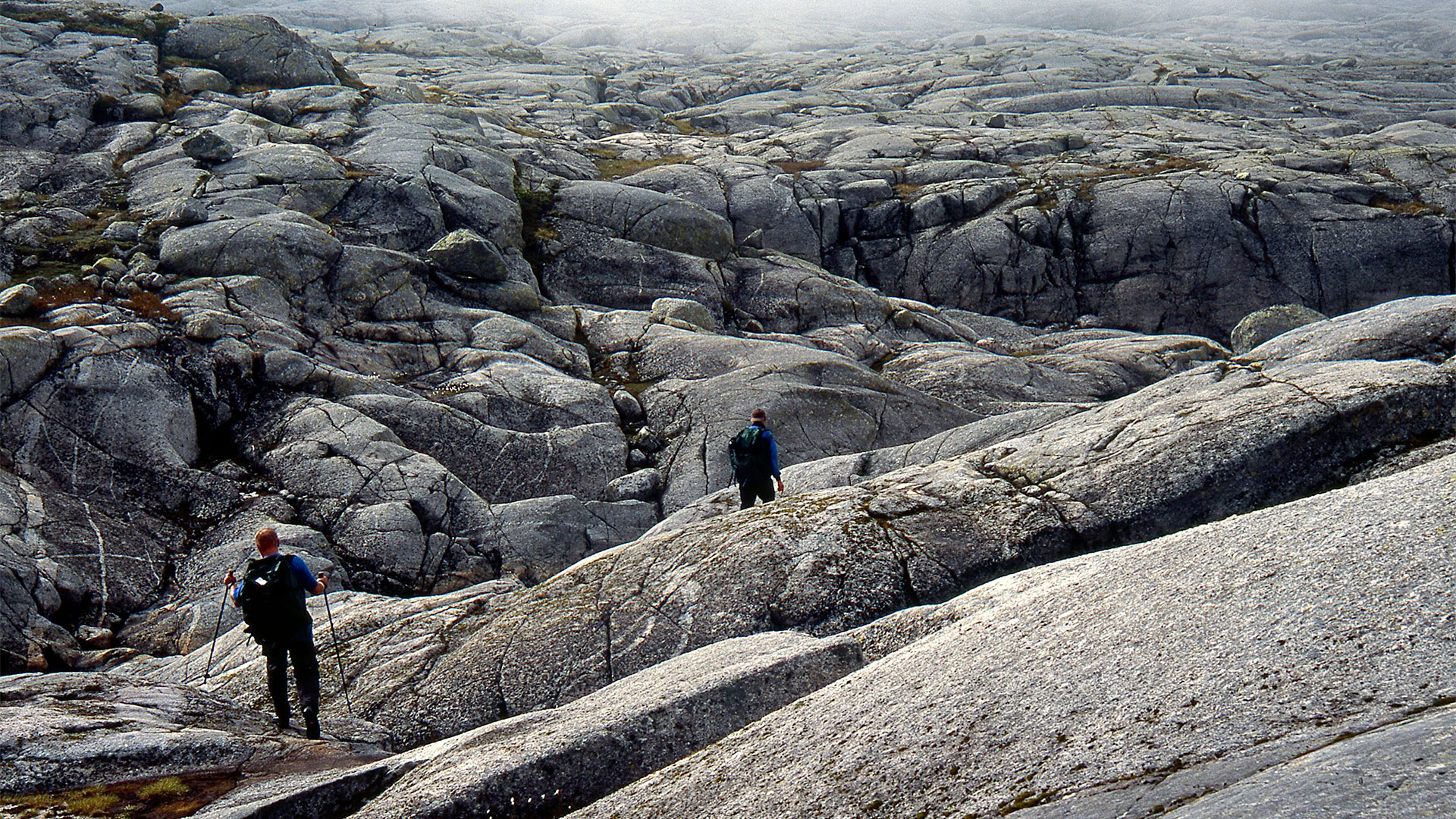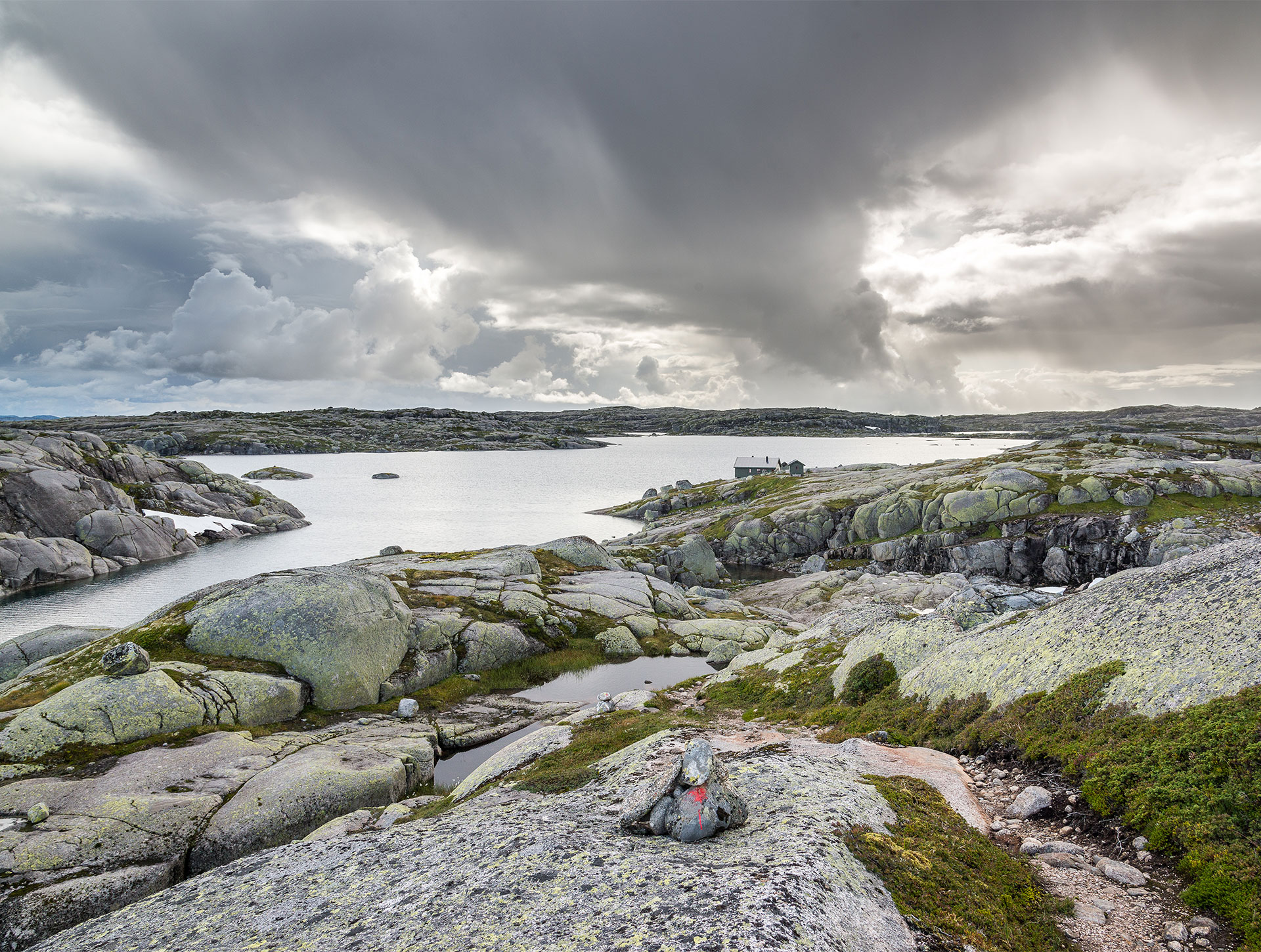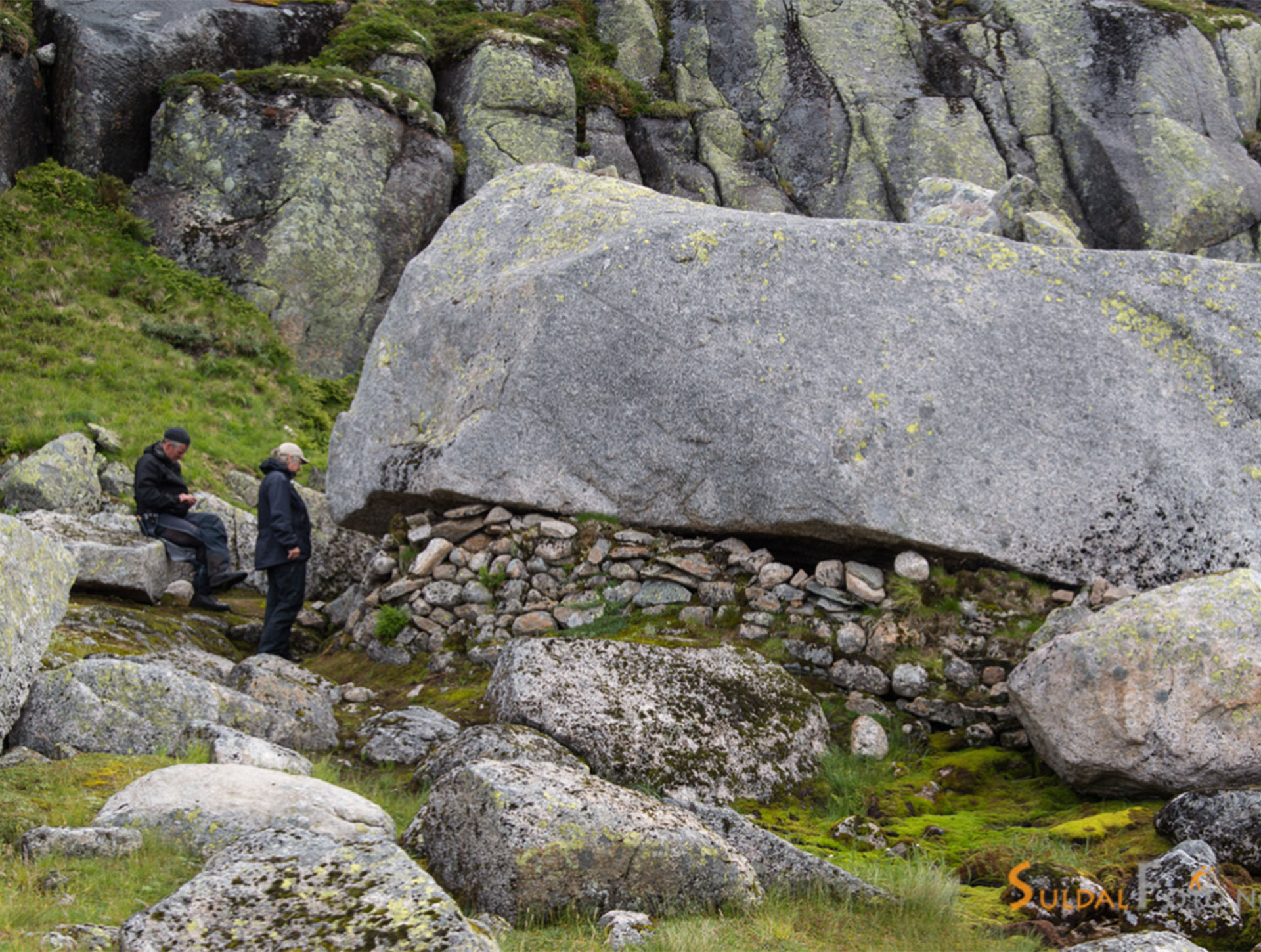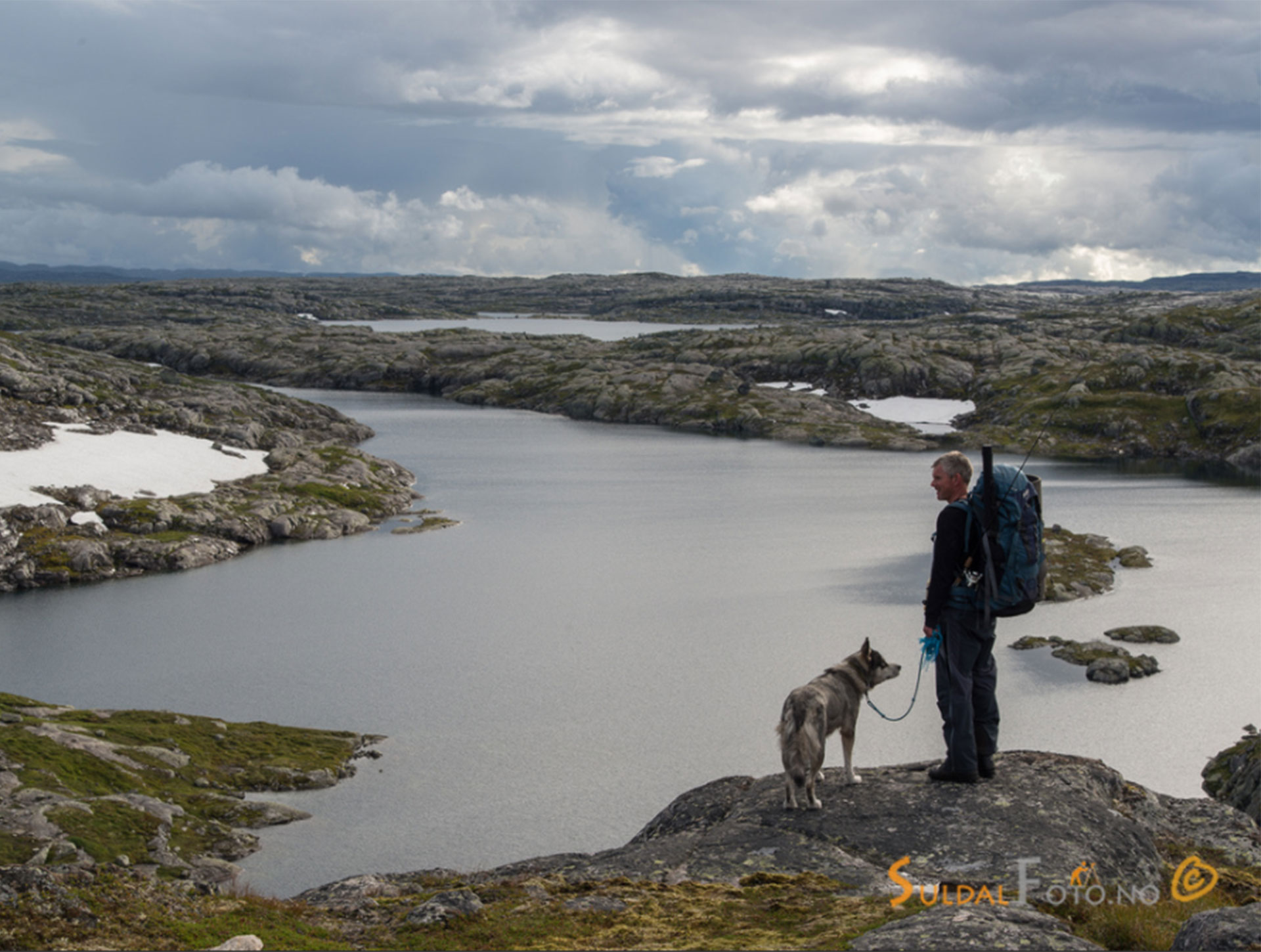
Background for protection and threats
Lusaheia Protected Landscape was protected to safeguard a distinctive and beautiful high mountain landscape that is home to rare and vulnerable natural elements. Lusaheia’s heritage values are particularly connected to two things. One of them is the distinctive and relatively untouched high mountain landscape that can be found in large areas of the protected landscape, while the other is connected to Lusaheia’s function as a habitat for wild reindeer in the Setesdal-Ryfylke Wild Reindeer Area. Rich botanical localities and many cultural monuments from when people moved through the area, mountain farming, farming traffic and hunting and trapping are also important heritage values in Lusaheia. There are no major threats to heritage values that are linked to the landscape. However, the landscape is somewhat affected by previous hydropower development, which has greatly reduced the flow of water through Storådalen valley. In addition, no conditions exist in Lusaheia which pose a serious threat to the area’s function as a habitat for wild reindeer. What happens further east in the migratory corridor between Blåsjø and Svartvassmagasinet will probably have a far greater impact on the extent to which the wild reindeer will use Lusaheia in the future.
Plant life and wildlife
Large parts of Lusaheia Protected Landscape consist of barren mountainous areas where the vegetation consists of species that do not require many nutrients. The exception is a small area close to Skute where the nutrient-rich rock called phyllite provides the basis for a richer plant life. Many beautiful flowers grow in this area such as mountain avens and rock speedwell. Storådalen valley is warmer and has more deposits which mean that the vegetation is more lush. Here, visitors will find a scattered mountain birch forest, willow thickets and large areas of lush grassland.
Lusaheia is home to many birds of prey. Golden eagles soar over the landscape, kestrels hover in the air looking for their prey, and gyrfalcons swoop down on unsuspecting ptarmigan. In years when there are many small rodents, rough-legged buzzards nest on Storådalen valley’s steep cliffs. Otherwise, birdlife in Lusaheia is very similar to other places in Ryfylkeheiane, where ptarmigan, ravens and snow buntings are common sights while out on a hike.
Seeing wild reindeer is a common occurrence in Lusaheia. During the summer, it is usual to see small herds of bull reindeer. During winter, however, herds of grazing cow reindeer and their calves move into the area. Today, there are a lot fewer wild reindeer in Lusaheia than there was before the major hydropower developments in the 1970s and 1980s. The bodies of water called Svartvassmagasinet and Blåsjø are now major obstacles for the wild reindeer migration to Lusaheia.

Past use of the area
Lusaheia must have been used a lot for hunting and trapping wild reindeer during the Iron Age and the Middle Ages. Especially in the area around Eidavatn lake, one can find several walled archers’ hides that are evidence of this activity. Famous hunting shelters such as Torbjørnsherberget and Jensahidleren are cultural monuments that were used while hunting wild reindeer with rifles from the 18th century to the present day. There are many of these stone shelters in Lusaheia that were used by shepherds until the beginning of the 1900s. The most famous of these can be found at Verhidler and Krumsåkvelven in Storådalen valley, and at Vassrau and Tyskbotn south of the valley. Summer mountain farming also took place for a short period in Storådalen valley in the 1800s. One of the most commonly used routes between Ryfylke and Setesdalen valley ran through Lusaheia. This route started at Kleivaland or Førre and ran across Skute and Storsteinsheia to the farms at Brottelid, Dysje and Brattland, which are located next to Botsvatnet lake in Bykle. Today, large parts of this old road are included in Stavanger Trekking Association’s trail network, so why not follow in the footsteps of the old mountain farmers and go on a memorable trip in fantastic mountain scenery.

Current use
Lusaheia continues to be an important grazing area for sheep, and approximately 300 animals grazed in the area in 2013. Eidavatn belongs to Stavanger Trekking Association and is the only tourist cabin in Lusaheia. In addition, large sections of the waymarked tourist trails Eidavatn-Grasdalen, Eidavatn-Nilsebu and Eidavatn-Litle Aurådal pass through the protected area. In recent years, Eidavatn has had about 210 overnight stays; 10 of them during the winter season and 200 during the summer. Nilsebu tourist cabin is located just outside the protected area, but visitors to the cabin go on day trips to Lusaheia. There is a waymarked trail running from Nilsebu to Litle Aurådal. In recent years, Nilsebu has had approximately 850 overnight stays; 350 of them during the winter season and 500 during the summer. Use of the tourist cabins in Lusaheia seems to have been relatively stable over the last 30 years. Lusaheia has been an important area for both big game and small game hunting, but there hasn’t been any wild reindeer hunting on Hjelmeland common land in recent years. Small game hunting on the common land has also been prohibited for certain periods of time. There is also good trout fishing to be had in many of the lakes in Lusaheia, and there are good chances of catching Canadian brook trout in Eidavatnet lake.

Sources and further reading
Verneforskrift på Lovdata Forvaltningsplan på verneområdestyrets nettstad Anundsen, K. 1972. Glacial Chronology in Parts of Southwestern Norway. Norse geologiske undersøkelse. Bakka, Tryggve (1997). Stadnamn, vegar og verksemd i Dyraheio. AmS-Varia 16 Bang-Andersen, Sveinung (1983). Kulturminner i Dyraheio. AmS-Varia 12 Brandal, Trygve og Tjeltveit, Njål (1996). Sau og hei. Sauehald og heiaføring i Ryfylke og på Haugalandet. Ryfylkemuseet. Brandal, Trygve og Tjeltveit, Njål (1998). Geit og støl. Geitehald i Ryfylke og Nord-Rogaland. Ryfylkemuseet. Grunneigarane i Grasdalen, Storådalen og Futen sameige, Nilsebu sameige og Hjelmeland Statsallmenning. 1992. Lusaheiaområdet-rapport om tidlegare og nåverande bruk av heieområdet. Odden, Alf. 2021. Villreinen sin bruk av heiområda i Hjelmeland. SVR-notat 2/2021. Roalkvam, R. 1986. En oversikt over naturforhold og verneinteresser i Vormedalsheia og Lusaheia i Hjelmeland kommune, Rogaland. Fylkesmannen i Rogaland, 1986. Søyland, R. 2009. Nilsebu kraftverk-virkninger på biologiske mangfold. Ecofact rapport, 2009-36
